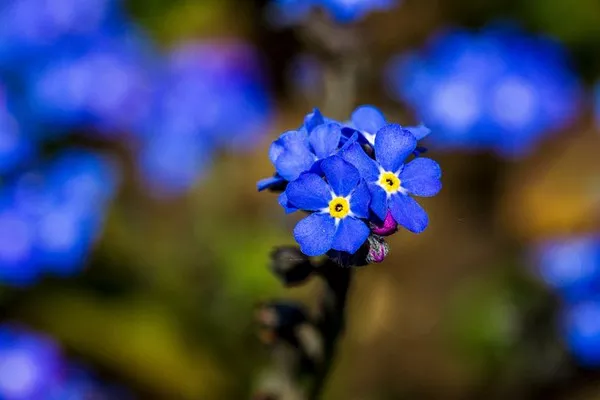Nature’s palette is vast and diverse, offering a kaleidoscope of colors that captivate the human eye. While flowers come in a myriad of shades, one hue that stands out for its rarity and allure is blue. Blue flowers have a unique charm, evoking a sense of tranquility and mystique. In this article, we will delve into the world of plants that boast the captivating beauty of blue flowers.
The Rarity of Blue Flowers:
Blue flowers are relatively uncommon in the plant kingdom, making them all the more precious and sought after by gardeners and nature enthusiasts. Unlike the abundant reds, pinks, and yellows, the blue pigment in flowers is less common due to the scarcity of blue pigments in plants. Plants typically contain pigments such as anthocyanins and flavonoids, which contribute to the colors we see in flowers. However, only a handful of plants possess the specific combination of pigments that results in a true blue hue.
Notable Blue-Flowered Plants:
Delphiniums:
Delphiniums, commonly known as larkspurs, are renowned for their towering spikes adorned with vibrant blue flowers. These perennial plants grace gardens with their stunning vertical presence and come in various shades of blue, from pale sky blue to deep indigo. Delphiniums are a favorite among gardeners seeking to add a touch of elegance and drama to their landscapes.
Hydrangeas:
Hydrangeas are versatile shrubs that can produce blue flowers, especially in acidic soil. The color of hydrangea blooms is influenced by the pH level of the soil – acidic soils tend to yield blue flowers, while alkaline soils produce pink flowers. Gardeners can manipulate the soil pH to achieve the desired blue hue in their hydrangea blooms, making these plants a fascinating subject for horticultural experimentation.
Bluebells:
The enchanting bluebell, also known as Hyacinthoides non-scripta, is a woodland perennial that carpets the forest floor with delicate, nodding bells in various shades of blue. These iconic springtime bloomers not only contribute to the charm of natural woodlands but can also be cultivated in gardens to create a dreamy, blue-hued landscape.
Gentians:
Gentians are a family of plants known for their intense blue flowers and trumpet-shaped blooms. These alpine and subalpine plants thrive in cool, mountainous regions and are admired for their vivid blue coloration. Gentians often symbolize clarity and purity and are a delightful addition to rock gardens or areas with well-draining soil.
Morning Glories:
Ipomoea tricolor, commonly known as morning glory, is a fast-growing vine that produces vibrant, funnel-shaped blue flowers. These enchanting blooms typically open in the morning, giving the plant its name, and they come in various shades of blue, from azure to deep cobalt. Morning glories are popular for their ability to cover trellises and fences with a cascade of blue blossoms.
Forget-Me-Nots:
Myosotis, commonly known as forget-me-nots, are dainty, sky-blue flowers with a yellow center. These charming plants hold sentimental value as they are often associated with remembrance and enduring love. Forget-me-nots thrive in moist conditions, making them a delightful addition to garden borders, meadows, or beside ponds and streams.
Cultural Significance of Blue Flowers:
Beyond their aesthetic appeal, blue flowers hold cultural significance in various societies. In many cultures, blue is associated with qualities such as calmness, serenity, and spirituality. Blue flowers are often used in bouquets and floral arrangements to convey a sense of tranquility and convey emotions of peace and harmony.
In Victorian flower language, where each flower carries a specific meaning, blue flowers are often associated with mystery and the unattainable. The rarity of true blue flowers adds to their allure, making them a symbol of the extraordinary and the extraordinary.
Conclusion:
The world of blue-flowered plants is a captivating realm where nature’s scarcity meets exquisite beauty. From the towering spikes of delphiniums to the delicate bells of bluebells, each blue flower carries a unique charm that enchants the beholder. Whether cultivated in gardens or admired in their natural habitats, these plants contribute to the rich tapestry of colors that adorn our world. As we continue to appreciate and cultivate these blue wonders, we are reminded of the delicate balance and inherent beauty that nature provides, one petal at a time.


